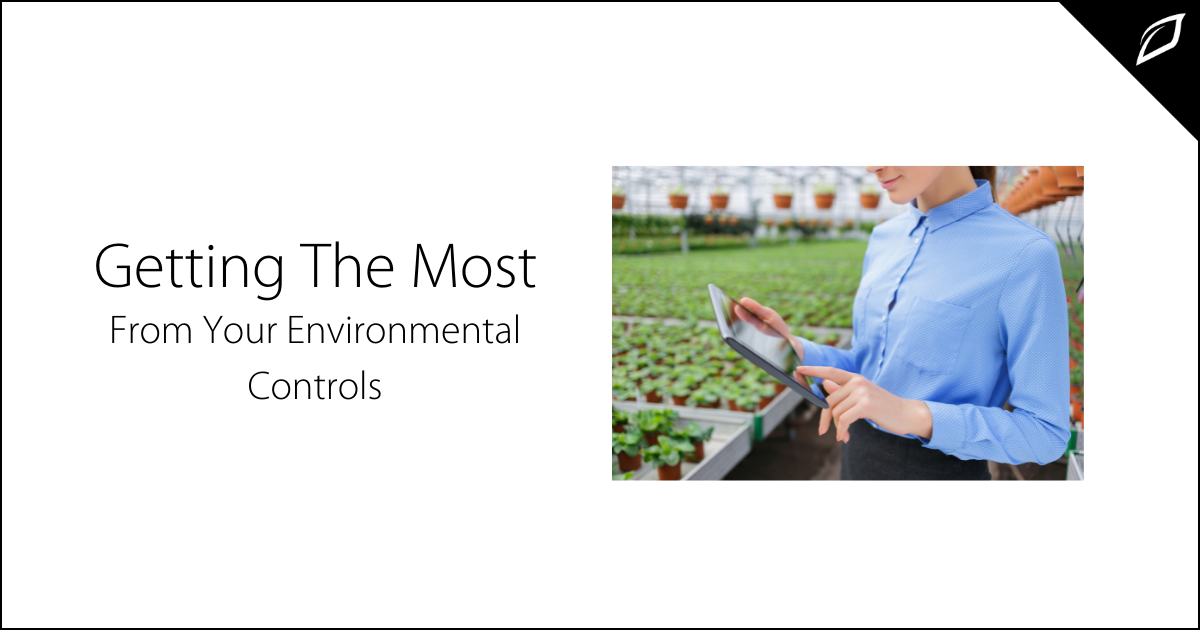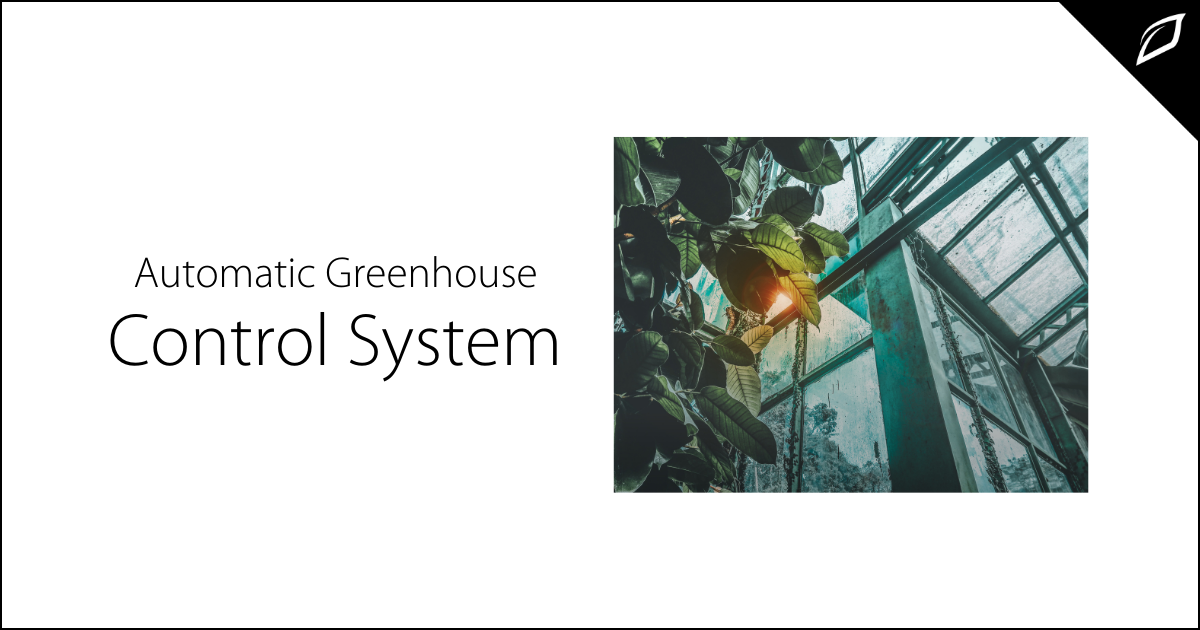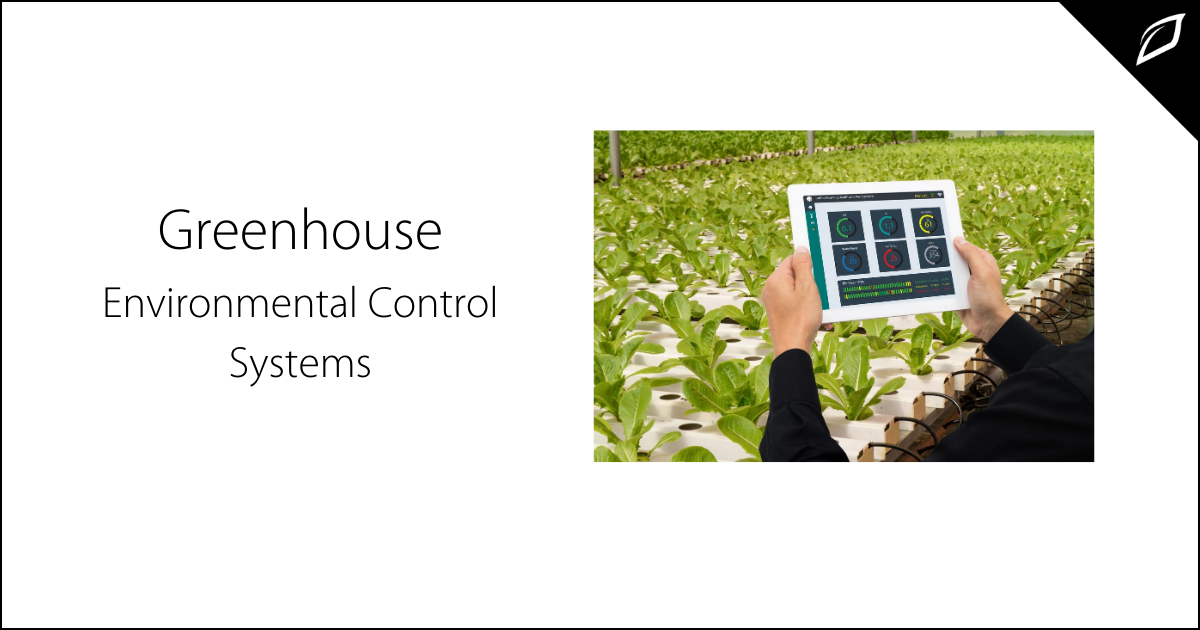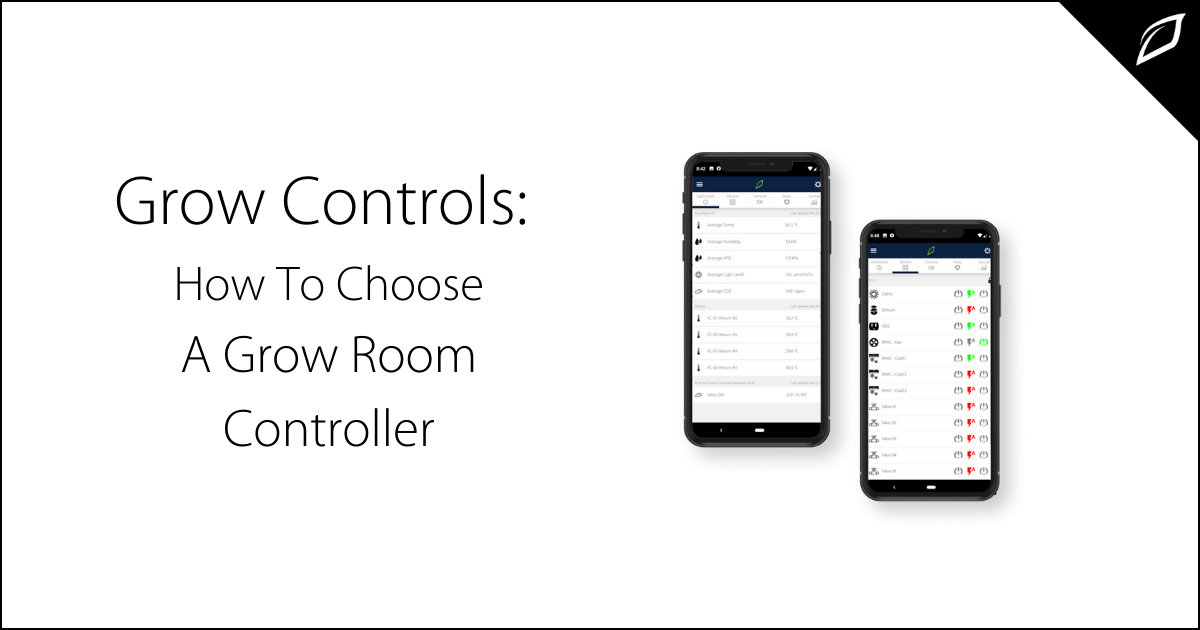Automatic Greenhouse Control System
The modern greenhouse maintains a growing environment that is about more than just the air temperature, combining multiple factors that impact plant...
2 min read
Joy King : Oct 1, 2021 6:00:00 AM

Controlling environmental factors in a commercial greenhouse or indoor grow is necessary for growing high-quality crops. An automated system eases the burden of manually performing tasks while building consistent, predictable cycles that maintain ideal growing conditions. High-quality systems are expensive but capable of reducing overall production costs in the long run. Think of your environmental controls like an investment rather than an expense. It'll pay off eventually.
What are Environmental Controls?
Environmental control systems automate labor-intensive tasks. An example of this in action; if the air temperature goes above 80 degrees, trigger a motor controller to open vents. Close vents if the temperature goes below 75 degrees. From easy chores like closing or opening vents or shades to complex monitoring of CO2, VPD, and relative humidity, control systems monitor the environment, create rules based on data collected and trigger preset automation.
While there are many upsides to investing in a controlled environment system, not all equipment or companies are created equal. Here are some tips on making sure you get the most out of your system.
Education
Before choosing the right environmental control system, research companies you're considering to ensure they're well established and experienced in commercial cultivation. Researching competing brands will ensure you're making an educated decision and not just being swayed by sleek marketing campaigns. Speak to a company rep if possible; it'll help establish their communication level and allow you to ask questions about things like warranty, customer support, installation costs, etc.
Social Media
Search social media for other growers who use the equipment you're looking for to ask for feedback and guidance. Look at the company's social media feeds to see if they engage and respond to consumer questions. That'll provide essential feedback on their level of customer support, something critically important for their systems. You can learn a lot by trolling social media.
Scaling Your Grow?
If there's a possibility that you may be expanding your grow operation, make sure your environmental control system can expand with you. Most of these systems are easily expandable, but be sure to ask about them specifically when discussing system features to ensure you're not locking yourself into a system that can't grow with you.
Maintenance Schedule
Control systems are an essential tool in maintaining consistent quality crops. But like most things in your greenhouse or grow room, it requires regular, consistently scheduled maintenance. These systems are typically equipped with artificial intelligence, but it still requires you to inspect visually, clean, and maintain the equipment. Sensors may need to be recalibrated, or wiring may come loose. Proper maintenance may prevent a system failure, so prioritize your regularly scheduled maintenance.
Setting Your Budget
To get the most out of your environmental control system, you must create a budget based on the profit potential of your crop. Systems can cost upwards of $100,000, so ensuring your crops will support the investment is a significant component of your buying decision. This is where your education will assist you. Knowing precisely what the system can do for you and understanding your crop profit potential will give you the basic information necessary to make a good buying decision.
Keep a Journal
Let's face it, even the best-made equipment occasionally fails. By keeping a troubleshooting journal, you'll record persistent issues and ways to solve the problem. Journaling will allow you to provide helpful feedback to the company you purchased from as well. You may be able to predict specific trends or the timing of malfunctions.


The modern greenhouse maintains a growing environment that is about more than just the air temperature, combining multiple factors that impact plant...

What are environmental control systems? As any expert will tell you, a growing environment is more than just the air temperature. It's a potent...

How to Choose Your Environmental Controls As a grower, there are plenty of things to consider when planning your strategy, and the grow room...